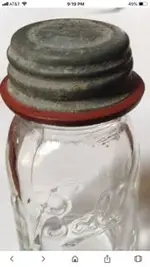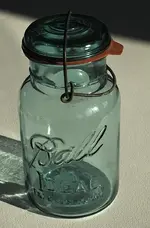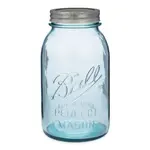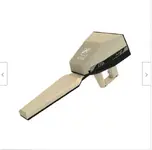Thanks for your help.
1. I don't have a detector yet. Your advice would be appreciated. I find the wide variety of equipment quite mind-boggling. I tried using a White's TM 808 Metal Detector last fall. I was told that it would be ideal for detecting larger objects like a mason jar. I tried to "calibrate" it by burying a jar of coins, then remembering what the tone sounded like. That didn't work for two reasons I think: First, it was hard to replicate that exact tone. Second, if the detector "hit" on anything, I felt like I could be missing an opportunity. So, I ended up digging everything I detected. That yielded and iron, horseshoe, lots of odd iron pieces, the top of a wood stove, and general junk (cans, etc.).
2. I've been told by more than one source that a man who settled the land put $5 and $10 gold coins in mason jars and buried them for safe keeping, back in the mid- 30's. I realize everyone has heard a story like that. But one local guy said his grandpappy saw them. When the settler wanted to confide in him about where he was stashing them, in case he died or something. This grandpappy declined saying "I haven't seen a quarter all week, I don't want the temptation of knowing." Remember, this was during the depression.
3. I'm guessing they would be buried around his original stone house. That house was taken apart piece by piece after he died, as many people were looking for the stash. Since then, the rubble pile of a house was bulldozed to clean up the land. The general area of his homestead is about an acre and is bordered by a stream, but is within 34 acres that I know own. So, it's possible that a bulldozer crushed the jars and they are spread and buried all over. Or they were stashed near a tree or something and avoided that fate.
4. The soil is loamy with lots of rocks. This can be tough digging.
5. Buried in the late 30's to keep the money out of the banks.
6. This is in the mountains of North Carolina, elevation 3,500 feet. So, we get snow and frost depth can be up to 1-2'.
Thanks again!
Based on your information and my calculations. These are my thoughts..............
The 1 qt mason jars (if thats what they were buried in) or could be pint jars, have been buried for 80+ years in loamy rocky soil with annual freeze and thaw.
Factor in the normal accumulation of material on top of the ground over 80 years such as, decayed leaves, dust, grass, etc.
Figure the quart jars weigh approx 20 lbs each full of gold coins. (a quart of gold flakes will weigh 30 lbs)
Pint jars full of gold coins 10 lbs each or so.
Assume the tops/sides of the jars were buried approx a foot deep and the hole would have been 18-20 inches deep.
Doubtful if more than 2-3 jars per hole. Who knows how many jars or how many holes or how deep.

I would use a detector capable of detecting at least two feet deep minimum.
The Whites Tm 808 which is what I use for cache hunting and is what I would recommend.
Otherwise I would recommend the Minelab GPZ 7000 which costs $8,000.00 and add another $1,300 for the 32" coil.
Doubt you would want to do that, considering that the coins could possibly have been recovered by the owner himself or someone else he confided in.
If the bulldozer did scatter the coins then they would be in range of most good coin detectors. Get the best one you can afford.
The Minelab Gold Monster 1000 sells for $850 and comes with two coils and other acc. Is designed for detecting gold nuggets and simple to operate.
Just because it is tuned for gold doesn't mean it wont detect all metals. Parts of NC is gold bearing and you may even find a big nugget or two!
Another point is that it has a ground balancing feature to eliminate false signals due to soil mineralization.
Without seeing the lay of the land myself, You may want to pay attention to any depressed areas in the ground that would indicate a hole dig that has settled over time.
Digging trash is part of treasure hunting. Each hole you dig is one more hole closer to the pay off.
I once dug six feet deep only to find an old iron tractor wheel.
Do not try to discriminate by tone. DIG ALL TARGETS and then re check the hole. Also wear headphones for a stronger signal.
80 years is a long time and metal objects could have found their way on top of the cache by chance. Again re-check the hole.
Was there a barn or chicken coop on the property?
How about a large boulder or rock? Sometimes placed over a cache and easy to overlook when detecting.
20 lbs of gold is worth approx. $490,000.00 melt value. Actual coins could be worth much more.
Worth digging lots of junk for? You decide.
Go for the Gold

GG~









